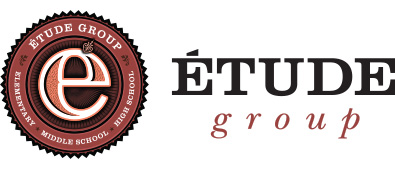Thirteen teachers from The Mosaic School and IDEAS Academy attended project-based learning training conducted July 18-20 by the Buck Institute of Education.
Ryan Bemis, Deb Gilbertson, Mike Q. Hanlon, Stuart Howland, Courtney Kooistra, John Pena, Michelle Renzelmann-Ross, Karen Robison, Rayna Rokicki, Jenne Smith, Tad Phippen Wente, Peter Woods and Molly Zielke participated in the training led by Aaron Eisberg.
Eisberg is a technology specialist teacher in the Larkspur School District in Larkspur, Calif., where he utilizes project-based learning in his classes. He has been working with and for the Buck Institute for several years. Eisberg holds a bachelor of science degree in natural science from Loyola Marymount University and a master’s degree of science in elementary education from Indiana University-Bloomington.
While the concept of project-based learning is not new for many of the charter school teachers, they wanted to garner information on how to take it to the next level.
“We had already been doing project-based learning at Etude,” Hanlon said, referencing the half-day charter high school that has been replaced by the full-day IDEAS Academy. “With the Buck Institute training, we wanted to see how other schools were successfully using project-based learning in the classroom and figure out if there were ways we could further improve what we’re doing.”
For example, Etude students typically worked on independent, one-person projects. Although that may continue in some cases, most students will be working in groups of three or four.
“We believe students need to develop skills for working collaboratively, and the Buck Institute has given us strategies to work on those skills,” explained Hanlon, who will teach drama at IDEAS.
“The training was extremely helpful in learning how to create meaningful projects for learning,” concurred Rokicki, who will teach dance and social studies at Mosaic. “Often projects are used as the end result of a lesson, but through the Buck Institute training, we learned how to design, implement and assess projects that can be the entire lesson. The Buck Institute refers to this as projects as the main course and not projects as dessert.”
Rokicki said the Mosaic and IDEAS teachers worked together during the training to design projects for the first semester project block.
For example, Rokicki, who will teach movement, teamed up with Kooistra, who will teach math, to design a project around the mathematical concept of proportions.
“Students will work together to create a movement piece that demonstrates proportions in multiple ways,” Rokicki explained. “Students will start with a driving question and form a hypothesis to try to solve it. Experimentation, reflection and revision are a big part of the project process. In the end, students will share their project and the process that went into creating it with the school community and parents.”
“I am excited to put the Buck Institute training into practice in my classroom,” said drama teacher Hanlon. “For example, in my Video Production seminar, students will be tasked with producing an anthology of thematically connected short films. Rather than simply learning about production techniques, students will need to develop their own list of ‘need-to-know’ questions that need to be answered as they progress in order for them to create a quality end product.”
Rokicki added, “What I love most about these projects is that we are able to see students take concepts they’ve learned in their academic classes and apply them in other circumstance. If you can apply a concept in more than one scenario, then you truly begin to understand it and own it.”
While an objective of the Buck Institute is for projects to become an entrée rather than a dessert for students, teachers definitely see the icing on the cake.
Rokicki said, “These projects focus on developing the 21st century skills of collaboration, critical thinking and communication – cornerstones of both Mosaic and IDEAS philosophies.”

